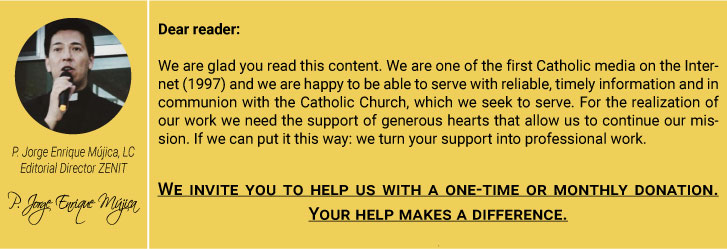Q: Which documents would you mention as regards the practice of reading a letter of the bishop or of the bishops’ conference by a layperson? There is a custom of reading such letters in the place of the homily. Should an ordained minister do this? What would be a theological reason? If a layperson can read a letter of Paul from Tarsus, why would she/he not be able to read a letter of Christoph from Vienna, for instance? — H.S., Krakow, Poland
A: There is little in the way of norms regarding the proper place and time for the reading of pastoral letters. Therefore we are more fully in the area of opinion.
A pastoral letter has been defined as «an open letter addressed by a bishop to the clergy or laity of his diocese, or to both, containing either general admonition, instruction or consolation, or directions for behavior in particular circumstances. In the Catholic Church such letters are also sent out regularly at particular ecclesiastical seasons, particularly at the beginning of fasts.»
I do not think that reading a pastoral letter is absolutely excluded from the time assigned to the homily, provided that it fulfills the proper objective of this moment as recorded in the instruction «Redemptionis Sacramentum»:
«[64.] The homily, which is given in the course of the celebration of Holy Mass and is a part of the Liturgy itself, ‘should ordinarily be given by the Priest celebrant himself. He may entrust it to a concelebrating Priest or occasionally, according to circumstances, to a Deacon, but never to a layperson. In particular cases and for a just cause, the homily may even be given by a Bishop or a Priest who is present at the celebration but cannot concelebrate.’
«[67.] Particular care is to be taken so that the homily is firmly based upon the mysteries of salvation, expounding the mysteries of the Faith and the norms of Christian life from the biblical readings and liturgical texts throughout the course of the liturgical year and providing commentary on the texts of the Ordinary or the Proper of the Mass, or of some other rite of the Church. It is clear that all interpretations of Sacred Scripture are to be referred back to Christ himself as the one upon whom the entire economy of salvation hinges, though this should be done in light of the specific context of the liturgical celebration. In the homily to be given, care is to be taken so that the light of Christ may shine upon life’s events. Even so, this is to be done so as not to obscure the true and unadulterated word of God: for instance, treating only of politics or profane subjects, or drawing upon notions derived from contemporary pseudo-religious currents as a source.»
Many bishops write pastoral letters during the liturgical year exhorting the faithful to imbue a season such as Lent or Christmas with particular fervor or inviting them to practice a specific Christian virtue. Such letters are often clearly designed to be read in lieu of the homily and often evoke the readings of the day.
In such cases it would be normal and natural that the celebrant himself read the letter. The pastor could also read it at all Masses so as to underline communion with the bishop.
It would not be proper to have a non-ordained person read such a letter at this moment. This is because the letter is, for all practical effects, the homily.
If a priest were to read a homily prepared by someone else, although attempting to make it his own, it would still be the homily. In an analogous way the bishop’s letter would be the homily and more so than the previous case insofar as it is a message from the diocesan pastor who has the right and duty to preach and teach his flock.
Other pastoral letters dealing with current political or social situations, or making monetary appeals, would probably be best left to the period between the Prayer after Communion and the final blessing. According to the General Instruction of the Roman Missal, No. 166, this is the appropriate time for general announcements.
However, if a bishop considered a particular social or pastoral situation to be of notable gravity, he could mandate that it be read at the time of the homily.
If the letter is to be read at the end of Mass, it would be possible for a qualified layperson to read the bishop’s message, although it is still preferable that it be the pastor.
Letters prepared to be read at Mass are usually brief and to the point.
Pastoral letters in which the bishops desires to expound on a particular topic in greater detail are sometimes summarized at Mass and distributed in full, using other appropriate means of communication.
* * *
Readers may send questions to zenit.liturgy@gmail.com. Please put the word «Liturgy» in the subject field. The text should include your initials, your city and your state, province or country. Father McNamara can only answer a small selection of the great number of questions that arrive.




